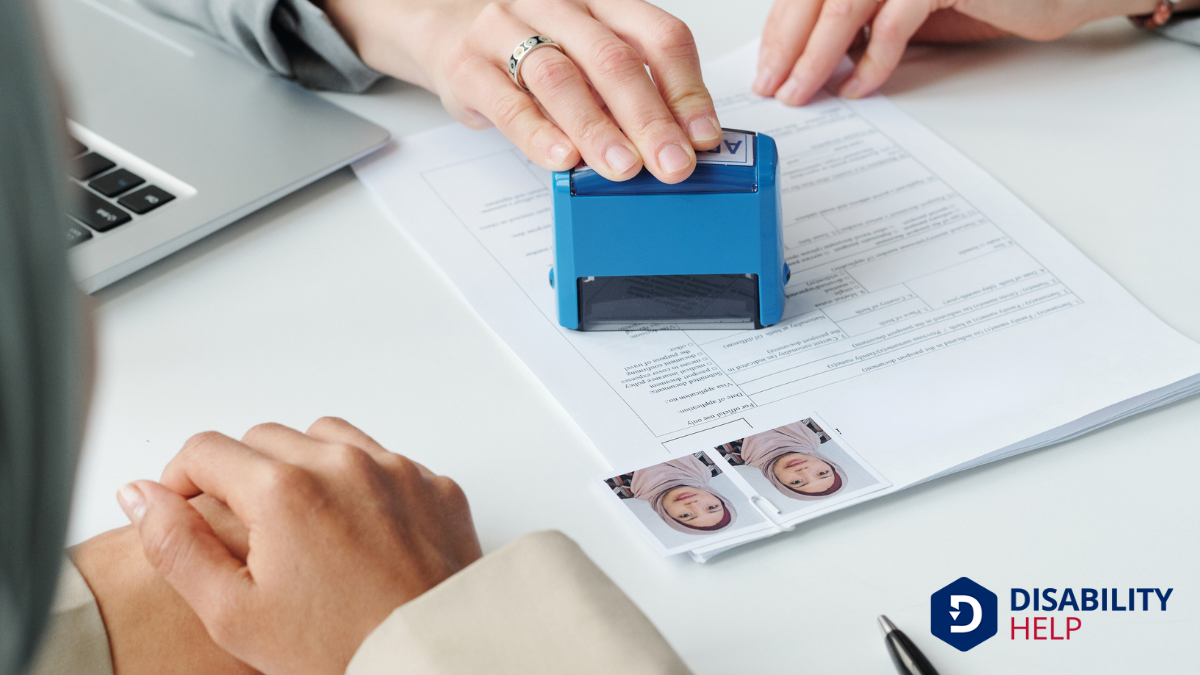When you apply for disability benefitsFinancial assistance provided to individuals who are unable to work due to a disability, such as Soc..., you might wonder how long you'll wait for that essential approval letter. The timeframe varies, often spanning from 90 to 120 days, but several factors can influence this. Whether your application is complete, if additional medical evaluations are needed, or simply the workload of the processing office, each plays a role. As patience is key, understanding these factors might just make the waiting game a little easier.
Key Takeaways
- Initial application responses usually take between 90 to 120 days for a decision.
- Incomplete applications and missing documentation can significantly delay the approval process.
- Reconsideration appeals might add an additional three to five months to the wait time.
- Hearing level appeals can extend waiting periods by 12 months or more.
- Online submissions and thorough documentation may expedite the application process.
Understanding the Initial Application Process
When you begin the journey of applying for disability benefits, understanding the initial application process is vital.
First, gather all necessary documents, including medical records, employment history, and personal identification. It’s important to fill out the application accurately and completely. Missing or incorrect information might delay your claim.
You’ll submit your application to the Social Security Administration (SSA), either online, by phone, or in person. The SSA reviews your submission to determine if you meet basic eligibility requirements. They might contact you for additional documentation, so stay prepared.
Throughout this stage, patience is key, as this initial review can take several months. By being thorough and attentive, you’ll help guarantee a smoother process and increase your chances of a timely decision.
Factors Affecting Approval Timeframes

Several factors can considerably impact the time it takes to receive a disability approval letter. Understanding these can help you manage expectations and reduce anxiety.
- Completeness of Application: Confirm your application is thorough and includes all necessary medical records and documentation. Missing information can lead to delays.
- Medical Evaluation: The Social Security Administration might require additional medical evaluations. Scheduling and completing these appointments can extend the timeframe.
- Backlog and Staffing: The workload of the office processing your claim affects the speed of the decision. Offices with high application volumes or limited staff may take longer to process claims.
Navigating the Appeals Process
If your initial disability claim is denied, don't be discouraged; managing the appeals process effectively can turn things around.
First, familiarize yourself with the appeals process's four levels: reconsideration, hearing by an administrative law judge, review by the Appeals Council, and federal court review. Each step requires attention to detail and timely submissions.
Gather additional evidence or documentation that strengthens your case, like updated medical records or new doctor opinions. Pay close attention to deadlines, as missing them can jeopardize your appeal.
Consider seeking help from a disability attorney or advocate who can guide you through the process. They can help you better understand legal jargon and improve your chances of success.
Stay proactive and persistent—your efforts can pay off.
Average Wait Times for Disability Approval
While maneuvering through the disability approval process, understanding average wait times can help manage your expectations. The timeframe varies based on several factors. Typically, you may experience a wait of three to six months before receiving an initial decision. However, it’s important to recognize that every case is unique.
Here’s a general breakdown to reflect upon:
- Initial Application: Most applicants can expect a response within 90 to 120 days.
- Reconsideration: If you need to appeal, this stage might take an additional three to five months.
- Hearing Level: Should your case require a hearing, the wait could extend to 12 months or more.
Being aware of these timelines helps you plan better and reduces the uncertainty during the process.
Tips for Speeding Up Your Application

To expedite your disability application process, focus on being thorough and organized from the start. Gather all necessary medical records and documents before you apply. This includes detailed medical reports, treatment history, and any relevant test results.
Verify that your contact information is up-to-date to avoid communication delays. Clearly describe your condition and how it affects your daily life. Use specific examples to demonstrate your limitations.
Don’t hesitate to ask your healthcare providers for detailed documentation to support your case. Submit your application online, if possible, as it can be faster than paper submissions.
Follow up regularly with Social Security to check your application's status. If you receive any requests for additional information, respond promptly to keep the process moving smoothly.
Conclusion
Steering through the disability approval process requires patience, but understanding what influences timelines can help. Make certain your application is complete and accurate to avoid delays. If you're appealing, prepare for a longer wait, but stay proactive by gathering necessary documentation promptly. On average, initial approvals take 90 to 120 days, while appeals can stretch over a year. Stay informed and persistent, and consider seeking professional guidance to help speed up your application.






